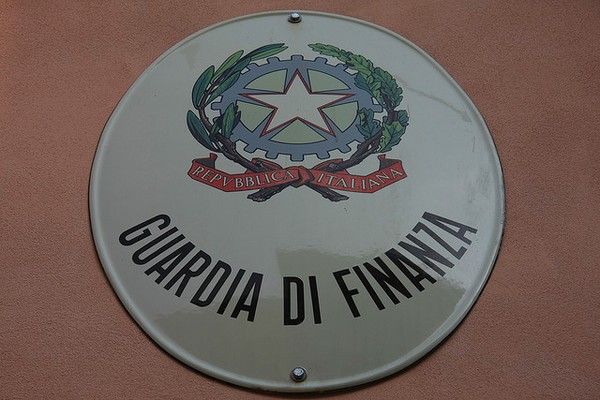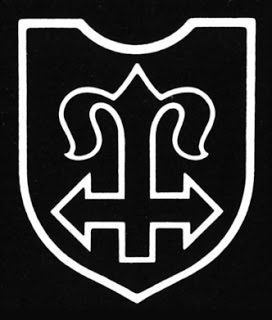
FROM THE SS TO THE FINANCIAL POLICE:
THE CONTINUITY OF FISCAL REPRESSION IN THE “ADRIATIC LITTORAL”
September 1943: Italy surrenders without conditions in World War II. From this date to May 1945, when the war ends in all of Europe, Trieste and other areas of the former Austrian Littoral were pre-annexed to the German Third Reich, becoming the Operational Zone of the Adriatic Littoral: Operationszone Adriatisches Küstenland – OZAK.
During that time, the Italian Guardia di Finanza – GdF (financial police) operates in the OZAK under the direct authority of the German Military Command: Gruppenführer Odilo Globocnik unites members of the Italian fiscal police to his own Wirtschaftspolizei (economic police).
Globocnik’s police acts on behalf of the S.S. taking care of tax inspections, but there is more: Obersturmbannführer Dietrich Allers includes members of the GdF in Einsaztkommand Reinhardt, a special corp deployed in anti-partisan warfare and in the deportation of Jews, confiscating all of their belongings. Is is Einsaztkommand Reinhardt to run death camp Risiera (rice mill) in S. Sabba, Trieste.
When fighting the partisans, GdF corps distinguish themselves handling reprisals together the the Germans.
The A.N.E.D. (Associazione nazionale ex deportati politici – Italian National Association of former political deportees) published book “Dallo squadrismo fascista alle stragi della Risiera” (From Fascist squads to the massacres in the Risiera) and describes them as follows (page 163, Italian edition):
“We recalled the seven garrisons of the Guardia di Finanza on the Trieste-Fiume street, and the Germans provided more than 1,000 men from that corp upon an agreement between Colonel Angelo Molara and the German commander; there were many officers among them, including Angelo Duse who, after the war, served as deputy general commander of the corp in Italy”.
As for the GdF’s military actions, the book recalls how they granted “safe passage” on the Trieste-Fiume road:
“The safety of the Trieste-Fiume road, never actually granted, was obtained via the uncontrolled destruction of dozens of Slovenian and Croatian villages, and also ruthless slaughters, like the one that took place in Lipa, on April 30th, 1944, where 387 harmless civilians were murdered”.
According to official historiography, 269 people, including 85 children lived in Lipa: they were all murdered.
The Financial Police was very zealous in its tax inspections: together with Bruno Coceani, the Nazi-appointed Fascist Prefect of Trieste, they played a decisive role in ruining alleged “tax frauds”, most of whom were impoverished people striving to survive in the desperate antechamber of death – war.
Trieste’s time under Nazi Germany’s heel is indeed a dark era, which came after 25 equally dark years of Italian and Fascist rule. A rule that started as a very harsh occupation (1918) and continued after the annexation (1920) to Italian Kingdom.
The Italian nationalistic and soon Fascist rule had already destroyed to the roots the Austrian Littoral – Österreichisches Küstenland‘smulticultural and multiethnic society, fruit of centuries of coexistence in the Habsburg Empire. This disruption was the hotbed of the horrors that strangled this border-area during World War II.
Italy’s forced Italianization of the Austrian Littoral (renamed itself “Venezia Giulia“) showed the most authoritarian side of the Kingdom: Italian laws were force on this land, the people were crushed beneath racial hatred, as a sense of superiority persuaded the Italians to be “heir of the glory of the Roman Empire”.
This culminated in the 1938 Italian anti-Jewish racial laws: Mussolini came to Trieste to proclaim this inhuman legislation, which remained in force until the Allies finally repelled it: LINK.
But the propagandas that caused this dramatic chain of events, born during the Italian Risorgimento and culminated in Italian Fascism, are still casting their shadows on our world: Italy doesn’t know its own history, its nationalistic lobbies deny and rewrite it all the time.
But how can Italy become a true democracy when such poisonous, anachronistic nationalism keeps ruling over it, when the structures of the former authoritarian regime are still there?
The Italianization of the Adriatic Littoral was fast, merciless, and of course it included the enforcement of Italian taxation. Indeed, the Kingdom of Italy was much different than the Austrian Empire.
The merciless Italian taxation was itself a mean to crush and assimilate the occupied people, and the job was entrusted to the Guardia di Finanza, which was very devote to it.
This is why, when the Nazis themselves occupied that Littoral, all they had to do was to incorporate this brutally efficient body: they appreciated it as it was.
When WWII finally ended, Trieste got back its freedom. On September 15th, 1947, at the coming into force of the Treaty of Pece with Italy, it became the capital city of a new independent State, administered by a British-United States Allied Military Government (the AMG FTT) on behalf of the United Nations: the Free Territory of Trieste.
The British and the Americans administered the new State from 1947 to 1954: during that time, the autonomous province of Trieste, a body of the new State (LINK) became a rich area thanks to its new system of taxation (Annex X of the Pece Treaty) paying at least 20% less taxes than it did under the former Italian rule, but especially thanks to the trades of the international Free Port (Art. 34 of Annex VI, Annex VIII of the same Treaty) which served a strategic role in European Reconstruction (Marshall Plan – ERP).
During the British-US administration, a new Guardia di Finanza was established: it was the Free territory’s new tax police. It had 2,500 military and civil employees, but unfortunately, despite the Allies’ best efforts to purge collaborationists, both the Guardia di Finanza and the Civil Police still included elements that had served the German occupation forces and Fascist Italy.
They are those responsible for paving the way to the local nationalistic lobby that attempted a “second redemption” returning Trieste to Italy and, failing, simulates Italian sovereignty over our land to this day.
This collaborationist gang had its own network of spies within the administrative structures of the AMG FTT itself, and is largely responsible for the abuses in the current temporary civil administration. Its best efforts all aimed to “redeem” Trieste once again. Turning it into Italy’s “last colony”: (LINK).
Trieste’s spring ended in 1954: with the MoU regarding the Free Territory of Trieste, the Governments of the United States and of the United Kingdom sub-entrusted the Italian Government with the temporary civil administration of then Zone A of the FTT.
Yet, even if Italy recognizes the Free Territory, even if administration does not mean sovereignty, this State under the UN Security Council’s own protection (LINK) had once again Italian tax authorities. And, in spite of the law, they continued spoliation the State and its international Free Port, regarded as a very dangerous competitor for Italian ports.
Indeed, art. 5 of Annex X to the Italian Peace Treaty separates Trieste’s economic future from Italy’s, exempting the new State from the payment of the Italian public debt. Under the 1954 Memorandum, the administering Government must respect Trieste’s own status establishing a local, civilian Government, which would collect and manage the FTT’s own taxes.
Two States, two budgets. Two States, two administrations: Italian officers serving as administrative authorities must exercise Trieste’s jurisdiction, not Italy’s.
Instead, what we have is a cruel hunt to tax evaders, carried out illegally, in the name of another State. This is a proper summary of the “fiscal war” in this Littoral of ours.
Here there is only one evader of international legality: the local system of corruption, shielded in anacronistic nationalism.
Translated from blog “Ambiente e Legalità” – “Environment and Legality” by Roberto Giurastante
VIDEO: The massacres hidden by Italian historiography: the massacre of Lipa (in Italian)
The emblem of the 24th Waffen-Gebirgs-Karstjäger Division, involved in anti-partisan warfare in the Adriatic Littoral


RT @TriesteLibera: @RobertoGiurasta FROM THE SS TO THE FINANCIAL POLICE: THE CONTINUITY OF FISCAL REPRESSION IN THE “ADRIATIC LITTORAL” htt…
@RobertoGiurasta FROM THE SS TO THE FINANCIAL POLICE: THE CONTINUITY OF FISCAL REPRESSION IN THE “ADRIATIC LITTORAL” https://t.co/xdaYEEAlmA